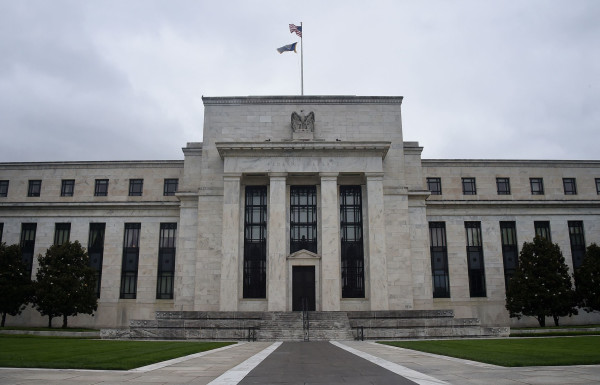

Bonds started making headlines towards the end of February, driven in large part by what is happening in the US.
Because the US dollar is the world’s reserve currency, the US Treasury market (bonds issued by the US federal government) takes on the role of the world’s 'risk-free' asset.
Because the US federal government controls the US dollar printing press, it can always repay US treasuries at maturity – although in actual fact, many more dollars are created by computers at the US Federal Reserve than are ever printed or minted.
Leaving aside the knotty issues of willingness to pay (Congress continuing to raise the debt ceiling) and risk being defined in nominal terms rather than real, US bonds are 'risk-free' if held to maturity because they are free from default risk (see, there is a reason I used 'risk-free' in quotation marks).
There are more than $20tn of US treasuries outstanding according to US securities trade organisation Sifma, but the real power of the US bond market is that it influences essentially all other securities, everywhere.
This works as follows: Say you are interested in buying a tiny UK company that specialises in selling medical widgets solely to the NHS. You will forecast their future cash flows and profits and discount these back to the present to get a fair price for the company.
The rate you will discount these at is the UK government bond yield plus a risk premium to account for the difficulty of producing and selling widgets.
All else equal, the higher the UK government bond yield, the lower the discounted value of future profits and so the lower the price of our NHS widget maker.
So, UK bond yields influence the price of our small UK company, but how does the US get involved? Well, international investors have a choice as to whether to buy UK government bonds or US treasuries.
If the yield on US treasuries goes up, US bond prices will fall, making them more attractive investments.
Investors may then shift their portfolios to sell UK bonds (causing UK bonds to fall in price, which pushes up the UK bond yield) and buy US treasuries (slowing or even slightly reversing the gain in US bond yields).
It is not entirely a one-way street. UK yields can influence US yields too, but the US Treasury market is the biggest, most liquid market out there, so it definitely has the most influence. And that influence does extend to all assets, everywhere.
Last month the US Treasury market moved up sharply. The US 10-year bond yield started the year at 0.93 per cent, and then moved from 1.11 per cent at the end of the January to briefly touch 1.55 per cent towards the end of February, before falling back to 1.44 per cent at month-end.
This may not sound like a big move but for treasuries it is, both in absolute terms and even more so relative to the size of the yield at the beginning of the year. It also means that yields, while still low overall, are more or less back to where they were pre-Covid.
The reasons for the move up in yields are all very positive. Firstly, there is increasing confidence that the US will be able to put the pandemic behind it, with the White House saying it will have enough vaccines to inoculate every adult by the end of May.
Secondly, and linked to this, the US is anticipating a very strong economic recovery, supported by easy monetary policy from the US Fed and the recent passing of President Joe Biden’s massive $1.9tn fiscal stimulus package.
Higher growth tends to come with higher inflation and, indeed, inflation expectations have recently moved up – although markets are not pricing in worrying inflation levels, yet. This in turn has driven higher bond yields, which tend to correlate with nominal growth (real growth plus inflation).
What is good for the economy is not always good for markets though. As described previously, higher rates can depress the share prices of stocks and they are particularly cruel to companies that have most of their profits far out in the future.
The further in the future the profit is, the more it is devalued by higher rates and this knocked previously high-flying (and expensive) growth companies hard in February.
There are quite a lot of these in the US, which is part of the reason the US stock market performed so well when rates were falling, but it does mean that good economic performance could, somewhat surprisingly, be a headwind for US equities as well as for bonds in general.
That said, there are certainly assets that tend to do much better in a rising rate environment caused by better global growth (reflation): commodities that are more in demand as manufacturing and investment picks up; financials that make more money as they can lend out at higher rates; and ‘value’ companies as a whole, which tend to have less of their profits far in the future and more today and so are less sensitive to interest rates.
Even small cap equities tend to do better as the optimism inherent in a growing economy tends to benefit riskier smaller companies at the expense of larger (and usually safer) ones.
So, where to from here? Well, it may be that what we have seen recently continues. We may see a situation this year where positive news for us, in terms of lockdown restrictions easing and the economy recovering, translates into much more mixed news for markets in general.
Nic Spicer is UK head of investments at PortfolioMetrix



